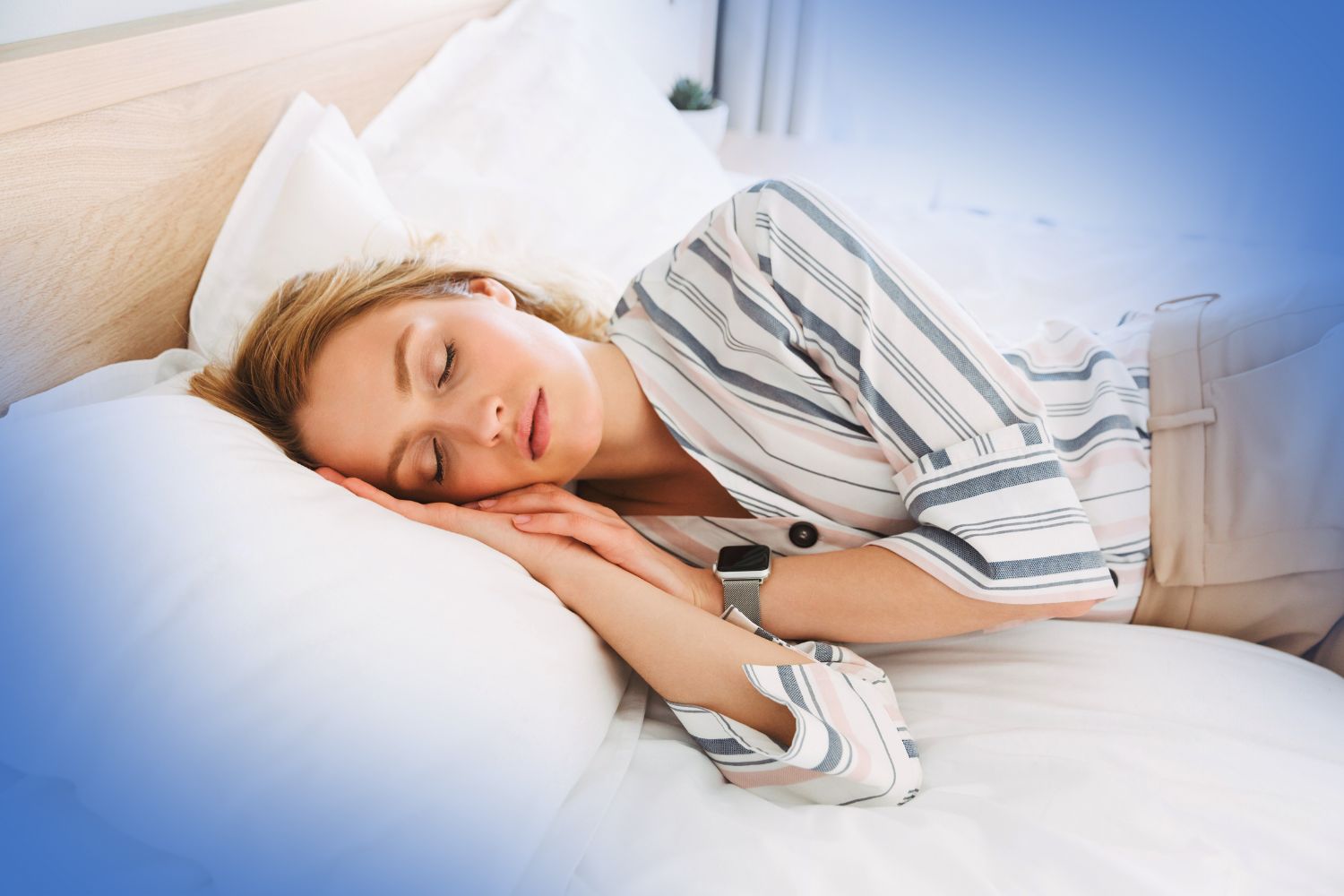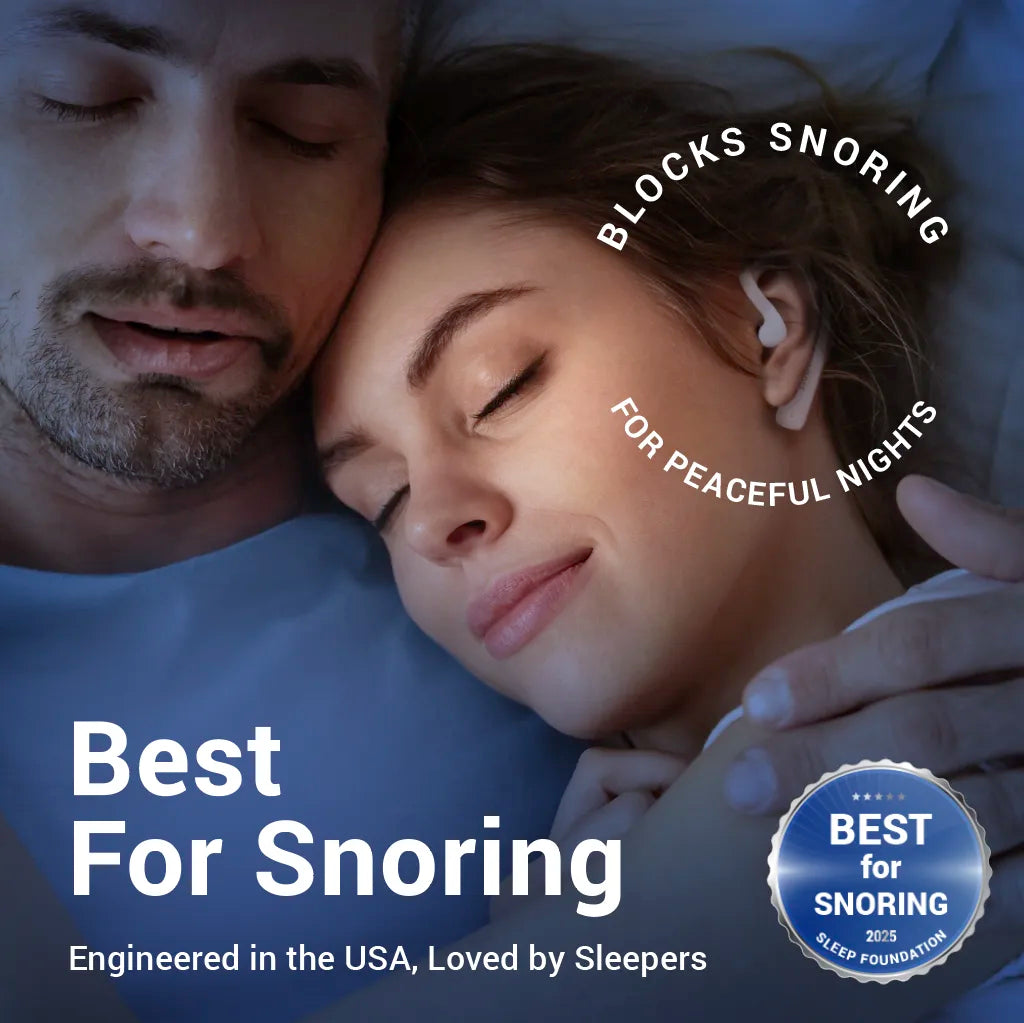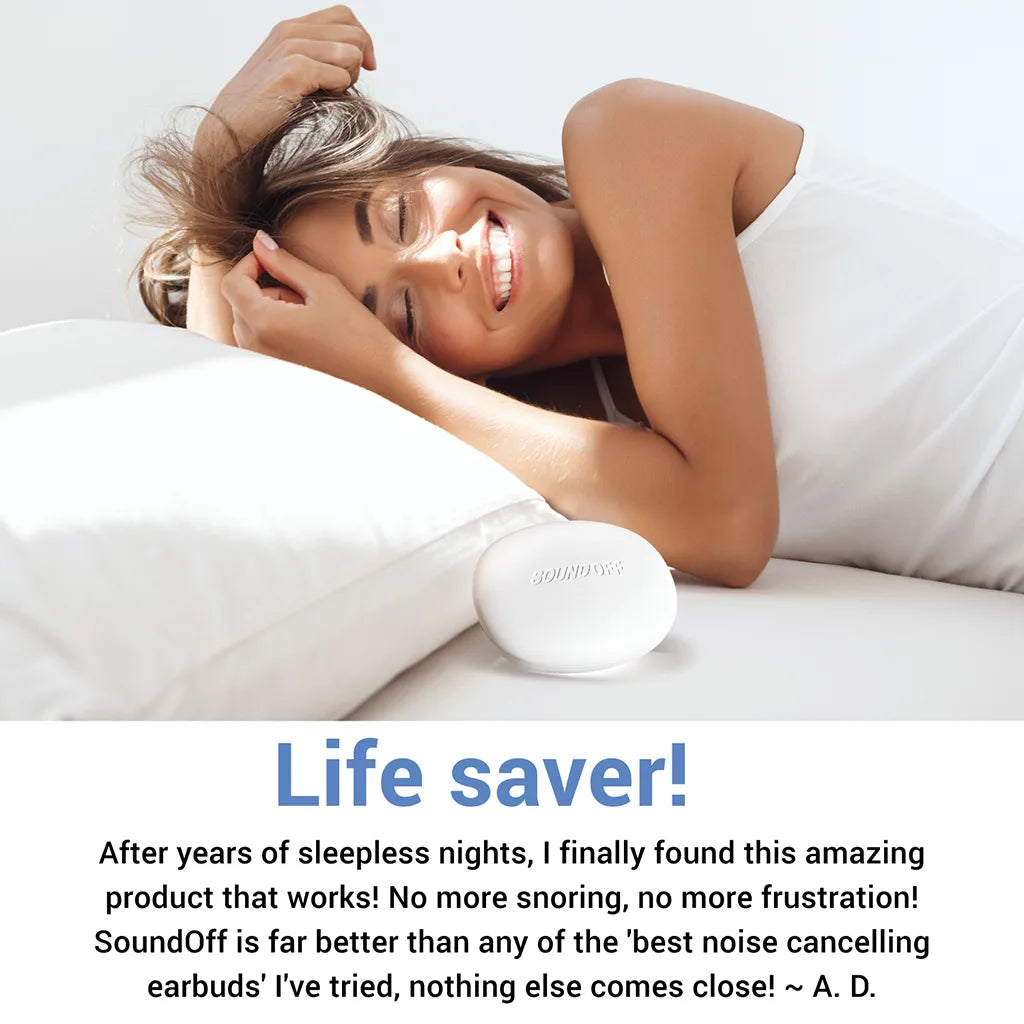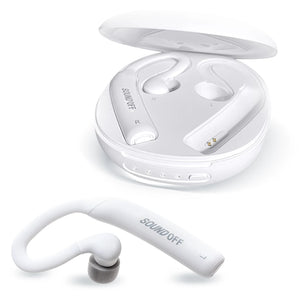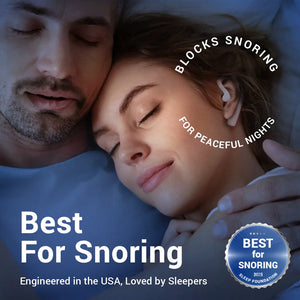
How Exercise Benefits Sleep
We all know exercise is one of the key pillars of health. But what role does it play in our ability to get a really good night’s sleep? More specifically, how much and exactly what kind of physical activity is required for better sleep? Is it the same for everyone? As we look closer at how exercise benefits sleep, we’ll cover 5 types of exercise you can use to improve your sleep quality—even if exercise isn’t really your thing. Let’s start with why exercise contributes to healthier sleep…
Why exercise benefits sleep
Scientists haven’t actually nailed down the exact reason exercise positively affects sleep. What they do know is that exercise increases time spent in deep sleep—the stage where body and brain rejuvenation take place. Here are some possibilities as to why exercise contributes to better sleep…
- Physical exercise releases endorphins—this helps lessen symptoms of anxiety and depression which can cause sleep loss.
- Certain exercises, like running, increase serotonin levels—low serotonin is linked to depression and insomnia.
- Exercising at the right times is helpful in resetting circadian rhythms—this can help you fall asleep earlier.
- During exercise, your core body temperature drops; mimicking the natural temperature change our bodies experience right before falling asleep.
Though science isn’t able to provide a full explanation as to why exercise affects sleep, researchers concur the relationship is real. Exercise not only helps you fall asleep more quickly, it also improves sleep quality.
Studies report chronic insomnia sufferers have shown a decrease in sleep onset time, and increased length of sleep time, in as little as four weeks after beginning to exercise regularly. Researchers have also concluded exercise is as effective as hypnotic drugs for insomnia relief.

The effects of exercise on sleep are similar to those of sleeping pills—but better because exercise won’t leave you fuzzy-headed the next day.
Insomnia: Exercise vs Lack of Exercise
Those who exercise regularly are less likely to be affected by sleep issues including insomnia. They are also less likely to develop insomnia in the future. On the other hand, those who fail to get sufficient exercise are at high risk of insomnia—as well as other health issues that may result from being physically inactive.
How much exercise does it take to make a difference?
According to Dr. Charlene Gamaldo, medical director of Johns Hopkins Center for Sleep at Howard County General hospital, people engaging in at least 30 minutes of moderate aerobics can see a difference in sleep quality the first night.
Dr. Gamaldo provides this as an example: “power lifting or an active yoga class can elevate your heart rate, helping to create the biological processes in the brain and body that contribute to better sleep.” The doctor also offers this advice: “picking an exercise you like will help you stick with it.”

Exercise is less of a chore when you choose one you enjoy.
Exercises that benefit sleep
Before we jump into the best exercises to help you sleep, just a reminder that there’s a best time for everything based on your personal chronotype. When you work with—not against—your chronobiology, you’re going to get the best results from whatever it is you’re doing.
So, to answer the question asked earlier: No, it’s not going to be the same type of exercise, the same length of time, or the same time of day for everybody.
What science has to say...
It appears there’s no consensus on the best time of day to exercise when relating it to sleep efficiency. Different studies show different results—one concluded time of day isn’t even a factor.
Listen to your body.
In the absence of concrete advice from the sleep experts, it’s good practice for us to do what we should already be doing anyway — listening to our bodies.
Know your chronotype.
Before starting a new exercise plan—or altering an existing one, do a quick refresher on your chronotype to make sure you’re getting the best sleep benefits from your efforts. Review your daily activities and take note of your peak activity times, energy crashes… and when you naturally get sleepy.
Certain chronotypes need to exercise first thing in the morning to clear the fog so they can focus their brains. And some other chronotypes need to make sure they exercise by noon—or chances are, they won’t get around to it (hello, Bears). Generally speaking, we can all be guided by these key points:
- Some exercise is better than no exercise—if you can’t do 30 minutes—do 5 or 10.
- Don’t engage in heavy exercise during the last three hours before bed.
- Work with your chronobiology to help maintain a consistent sleep cycle.
So, what's a chronotype?
Your chronotype is a predictor of how your internal bio clock is programmed as it relates to your 24-hour cycle of sleep and daily activities. It is represented by one of four archetypes (Bear, Dolphin, Lion, or Wolf) and is a guide to help you know what time of day to perform each of your daily tasks for maximum efficiency.
You are able to boost efficiency by completing tasks when your energy level is best-suited to performing that particular task. Exercising at the right time for You is as important as maintaining your sleep/wake schedule, being consistent with mealtimes, and being aware of when you should—or shouldn’t—drink coffee or alcohol.
If you’re not sure of your chronotype you can take this free quiz created by the Sleep Doctor, Michael Breus, PhD., author of ‘The Power of When: Learn the Best Time to Do Everything’.
5 Exercises that benefit sleep:

Use stretching alone—or as a warm-up to other sleep-promoting workouts.
1-Stretching
Limbering up before exercise is always a good idea. Not all of us have a disciplined exercise routine, and those of us who do, may still have tight muscles that need loosening. Stretching before bed is an excellent way to begin your exercise-for-sleep regimen.
Don’t limit your stretching to your nighttime wind-down. Stretching breaks can help ease you through your day by boosting your mood and preventing muscle tension build up… and the resulting anxiety.
How stretching benefits sleep...
Some exercises seem like less work and stretching is one of them. In fact, it almost always feels great which is another reason for making it your starting point. Stretching releases endorphins into the body; producing a sedative-like effect which reduces pain and calms the mind. So, you can more fully relax, and therefore transition into sleep more easily.
In addition, stretching increases blood circulation and our overall flexibility; providing additional benefits to us in these particular areas that might otherwise interfere with our sleep:
- Increases lung expansion
- Aids muscle recovery
- Lowers blood pressure
- Reduces nocturnal cramps
- Triggers digestion
Who can fall asleep with knotted up muscles, breathing problems, painful limbs, or indigestion? It’s easy to get started with stretching and it’s as enjoyable as it is beneficial. That said, there are a few simple but important rules to follow.
Make sure to do it correctly!
It’s important to ease into stretching your muscles with a gradual, stretching motion; then you can extend the movement until you physically feel the stretch. Make sure you always execute these movements smoothly—and never force a stretch.
Here are 6 Tips for Healthy Stretching (including why you should not bounce while stretching) to make sure you get the best results from your stretching exercises. *Be sure to check out the instructions for these 3 pre-bed stretches:
- Bear Hug—Great for loosening up tension in the upper back and posterior shoulder muscles. Also great when you need to show some self-love.
- Head Rolls—Relaxes and stretches muscles in the neck and cervical spine. Done correctly, head rolls can help improve upper-body stability, as well as range of motion and flexibility.
- Spinal Twist—Relieves compression in the lower back and improves spinal mobility. Relaxes the body and quiets one’s mind.
These simple stretches above are a quick-start to help you relax and fall asleep easier. Here, you’ll find more stretching exercises, with demonstrations included. Be sure not to miss the Legs-Up-The-Wallstretch. This stretch helps with digestive issues and improves circulation in tired, achy legs. If you have trouble sleeping due to Restless Legs Syndrome, this one’s for you.
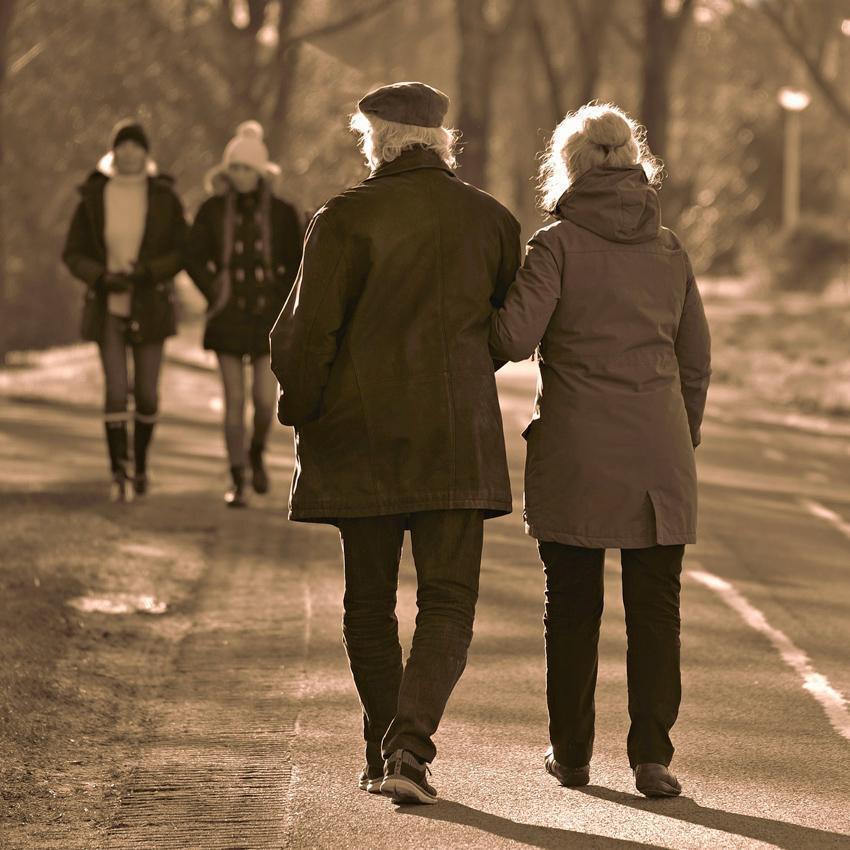
Exercise doesn’t have to mean strenuous movement—start with taking more walks in the sunshine…
2-Walking
Aerobic workouts and running are sure to burn up energy and bring results but they aren’t everyone’s cup of tea. And for those with physical limitations, they are often simply not doable. The good news is that exercise doesn’t have to equate to strenuous movement when it comes to sleep benefits.
A 2019 Sleep Health Journal study found that participants who increased the number of steps they normally took per day by participating in low-intensity walking exercise experienced both improved sleep quality and duration.
Why does walking benefit sleep?
Once again, there’s no clear-cut answer, however, these potential explanations may be factors;
- Exposure to natural light while walking helps maintain circadian rhythm.
- Light exercise is associated with stress reduction and physical well-being.
- Social benefits of walking with another person can offer a mood boost.
Regardless, it seems adding steps to your day may be enough physical effort to enjoy the benefits of longer, deeper, sleep. Most people enjoy walking, whether or not they’re inclined toward intense exercise. If this is you, start walking to start sleeping better.

Resistance exercises help one fall asleep faster—and experience fewer awakenings during the night.
3-Resistance Exercise
According to The American Heart Association, resistance exercise may promote sleep better than aerobic workouts among inactive adults—especially if those adults are poor sleepers.
Other experts concur. A study out of Iowa State University, conducted research on 406 inactive adults 35-70 years. All were obese or overweight with elevated hypertension.
Subjects were randomly assigned either no exercise, or 60 minutes of supervised aerobic, resistance—or a combination exercise—three times per week for 12 months. The researchers were surprised by the results. What they expected was that resistance exercise would be comparable to aerobic exercise—or maybe the combined exercise would provide somewhat better results.
However, isolated resistance exercise consistently showed the most benefits across the board.
What is Resistance Exercise?
Also called strength-training, these types of exercise require only the individual and a small amount of space for a workout. Examples of resistance exercise are:
- Squats
- push ups
- pull ups
- seated rows
- free weights
- stretching cables
- glute bridges
- planks
How resistance exercise benefits sleep
One German study examined exercise and sleep habits of 23,000 adults. It concluded that strength training exercise improves sleep quality by:
- Helping one fall asleep faster
- Assuring fewer awakenings throughout the night
Why strength training benefits sleep
Resistance exercise uses more ATP (adenosine triphosphate) during workouts. When ATP is depleted through exercise, it breaks down to become adenosine which has the effect of making one drowsy.
In addition to its sleep benefits, strength training helps to lower blood pressure and reduce stress, while also improving digestion by breaking down fat and sugar—all of which improve sleep quality. Check out this Beginner’s Guide to Strength Training for tips on getting started safely with resistance exercise.
When's the best time for Strength Training?
In The Power of When, Doctor Breus breaks down Fitness recommendations for each chronotype—based on the exercise type—and biorhythm considerations. Under each exercise type you’ll find a “Recap” and the best time to train for each of the archetypes.The biorhythm considerations for Strength Training are:
- Muscle Growth Rhythm: When to exercise to increase muscle volume
- Muscle Strength Rhythm: When your cortisol to testosterone ratio is most favorable for lifting weights.
- Pain Tolerance Rhythm: When the different chronotypes can best withstand pain.
For instance...
- The Muscle Strength training window for a Lion chronotype is between 2:30 p.m. to 5:00 p.m.
- For Muscle Growth, the ideal time for a Dolphin chronotype is 8:00 p.m.
When the task and chronotype change, the “best” timing for the task also changes…
- Were the Lion to prefer going for a run, they could expect to achieve faster times and an energy boost by performing this task at 5:30 p.m.
- Likewise, if the Dolphin chronotype switched to Yoga to lower their cortisol level and blood pressure for better sleep, the ideal time for this task would be 10:00 p.m.
When's the worst time for Strength Training?
Dr. Breus also provides the Worst Time for any of the chronotypes to perform each task. For Strength Training, the worst time is 6:00 a.m. Why? Our body temperature is at its lowest in the morning. Training while you’re cold, makes you more susceptible to injury.

Body Weight exercises are a good choice when you’re unable to time your regular workout to end an hour before bedtime.
4-Body Weight Exercises
When you’re unable to time your regular workout so that it ends at least an hour before bedtime, there’s no need to miss out on your exercise altogether. Sleep specialist, Jaspal Singh, MD, recommends easy bodyweight exercise to keep your exercise regimen on track.
This is because your body temp begins to drop once you start your post-exercise cool down. That temperature drop helps ready you for sleep but it takes at least an hour to complete. Dr. Singh suggests these 3 body weight exercises—alone, or in combination—within an hour of your bedtime:
- Sit ups or crunches
- Leg raises
- Lunges
Keep it slow and steady and don’t overdo the number of repetitions. It’s important you don’t get your heartrate up too high right before bed. You may also find you need more time to reach full cool-down (as mentioned, some experts recommend allowing 90 minutes instead of an hour to improve sleep efficiency.)
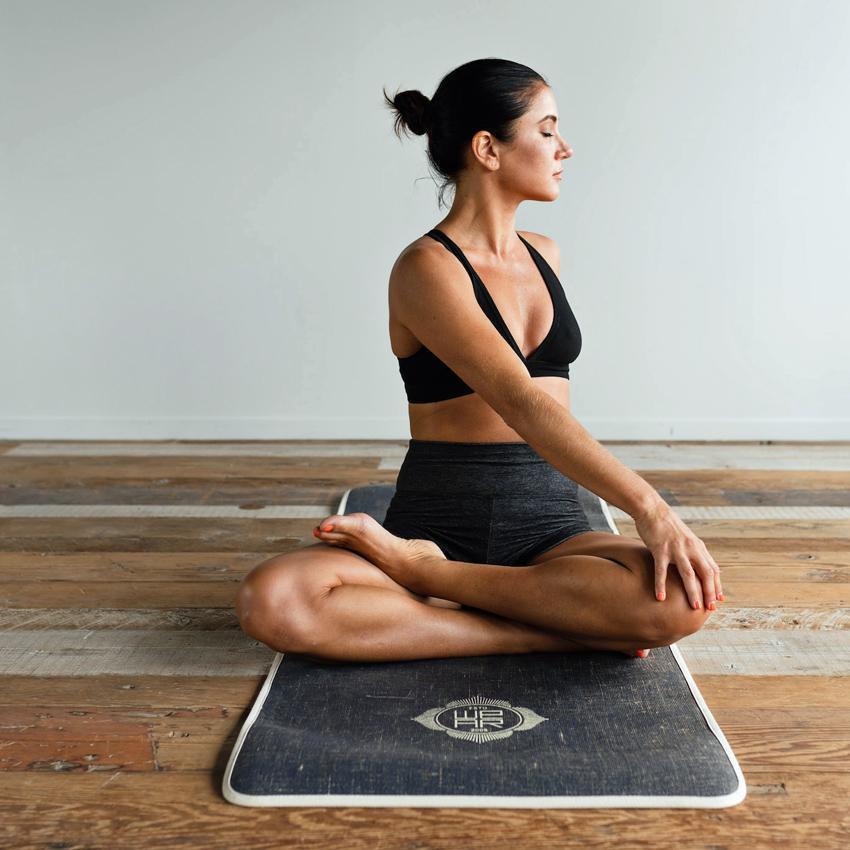
B6% of Americans practice Yoga to better manage their stress levels.
5-Yoga
For those who struggle to relax, pre-bed yoga can be especially helpful. Millions of Americans practice yoga and according to the CDC, 86% of them use it to manage their stress levels.
How yoga benefits sleep
- Stimulates the Vagus Nerve—this controls the body’s rest function
- Focuses on mindfulness—this helps control heart beat and manage anxiety
- Reduces sleep onset—also promotes longer sleep times—and fewer awakenings
- Lowers stress hormones–which improves sleep quality
Some forms of yoga can be intense. For a relaxation-focused, pre-bed workout, WebMD recommends practicing one of these forms which are more likely to help you sleep:
- Restorative yoga—this form of yoga is known to lower blood pressure and heart rate, and may help you fall asleep faster.
- Hatha yoga—is a gentle style that aims to unify your physical body, breath and concentration through controlled breathing.
- Yoga Nidra—done while lying down, this is form of yoga is a type of guided mediation that helps you focus on your personal intentions and observations.
A 2013 study found practicing yoga positively affected sleep and overall quality of life. Here are some simple yoga exercises you can try for better sleep.
While we’re talking about relaxation and keeping blood pressure in check…
It doesn’t do much good to find your Zen—only to be blasted out of your peaceful sleep by noise interference. Nocturnal noise is proven to causefragmented sleep. This disruption in one’s sleep cycle decreases slow wave sleep, causes more shallow sleep—and thereby reduces your sleep’s recuperative value.
Noise pollution is a fact of life. 64% of respondents to a NY City survey said noise disturbed their sleep at least once a week. Planes and automobiles are considered a major contributor to poor sleep across the globe. These noises not only affect us while we’re sleeping, but they also make us tired and cranky the next day—and over time, may cause long-term mental health issues.
Put an end to disruptive noises with SoundOff’s robust noise masking technology. SoundOff earbuds will not only block out those unwanted sounds—our soothing pink noise will calm your brain so you can quickly return to your Zen.

When loud noises disturb your sleep, SoundOff earbuds can soothe your nerves and return you to sleep quickly.
Back to a key Chronotype principle…
In our chronotype blog posts, we talked a lot about the importance of managing our body’s energy resources. It’s essential to make sure you use up all your excess energy before bed, so you are tired enough to fall asleep quickly. Here’s what to do:
- Find the exercise routine that works for you and practice it daily—preferably at the same time each day.
- Develop a custom wind-down routine to relax your body and keep your mind free of worrisome chatter.
- Avoid stimulants. Turn off the tech gadgets. And block out noises that can raise your blood pressure.
Keeping sleep apriority...
As you can see, moderate daily exercise is a key component in maintaining healthy sleep. Together, fitness, nutrition and sleep form the 3 Pillars of Health. Next post we’ll be taking a look at the importance of good nutrition. Until next time…
Wishing you awesome sleep—all night, every night.


